Refrigerants should last the lifetime of your HVAC appliance, but the system's wear and tear eventually result in leakages. The appliances require sufficient refrigerant to work optimally, so you may be wondering what refrigerant you can mix with R22 since the EPA directed that the production and importation of R22 stop in 2020. We inquired from the experts, and this is what they have to say.
Mixing R22 with another refrigerant is not advisable as this can adversely affect your system. The mixed refrigerants can react, causing temperature change and increasing the system's pressure.
The professionals advise recovering the old refrigerant first and then adding a new refrigerant afterward.
Because refrigerant leakages are common, we must use chemicals that will not harm our environment. Tag along as we discuss if you can mix different refrigerants. We will also explore telltale signs that your system needs more refrigerant and the characteristics of a suitable refrigerant. So, let's dive in.
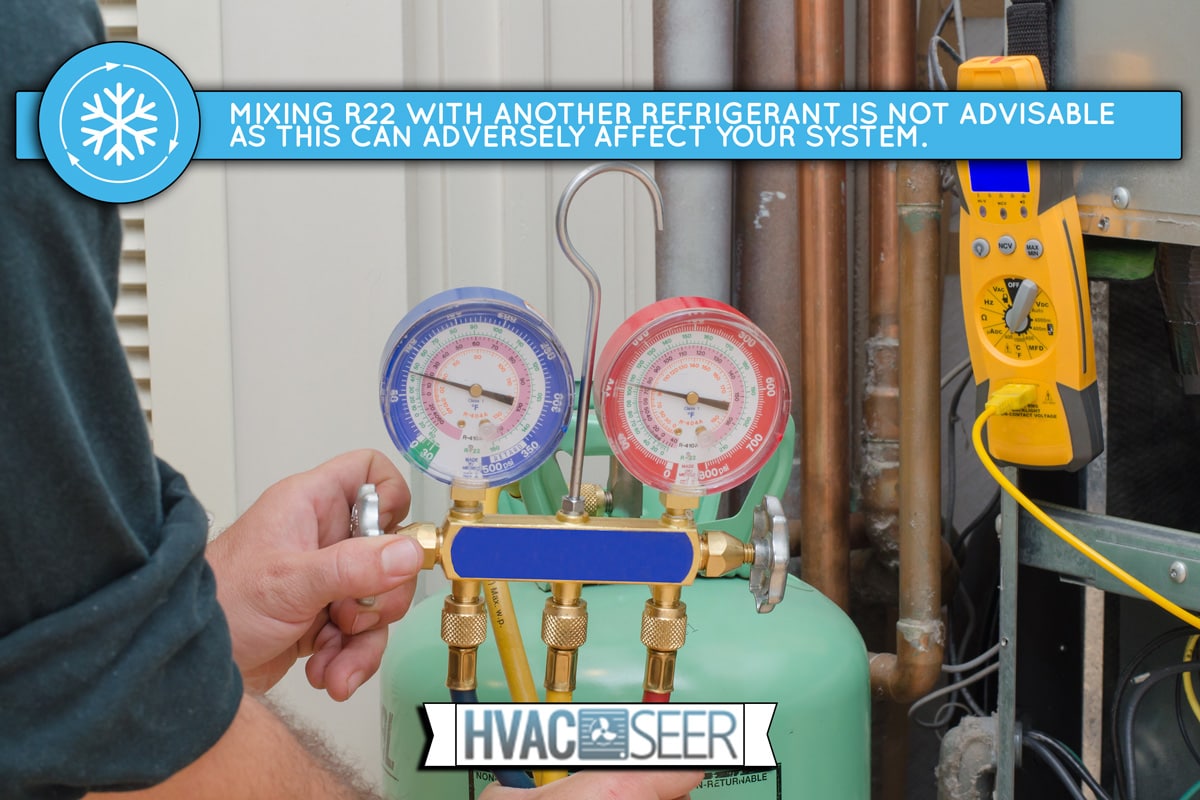
Can You Mix Different Refrigerants?
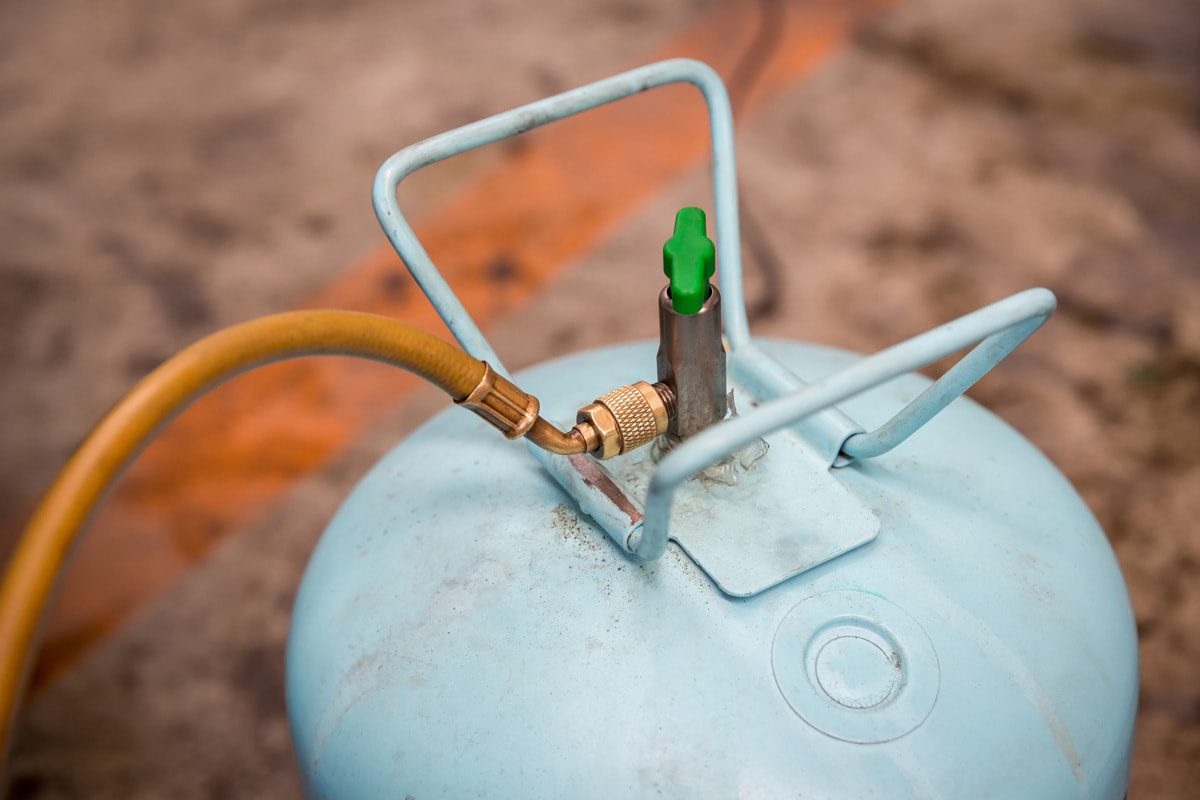
Before 2010, most HVAC unit manufacturers used freon, also known as R-22 or HCFC-22, as the dominant refrigerant chemical.
Manufacturers preferred freon since it has low viscosity, a low boiling point, and low surface tension. In addition, the refrigerant is stable, odorless, and does not pose a fire threat.
The downside of using R22 is that it has an unfavorable environmental effect. Although the refrigerant should be contained in a closed loop for the entirety of your HVAC system, sometimes it leaks. The leakage contributes to ozone layer depletion and global warming.
Since air conditioners need sufficient refrigerant to cool your home satisfactorily, the R22 phase-out may cause you to consider mixing R22 with another refrigerant to recharge your AC system. This thought may be reinforced when you compare the cost of R22 with that of other refrigerants.
Experts do not recommend mixing refrigerants, since this can damage your AC system and cause it to operate below par. In addition, it poses a safety risk for the technician. Furthermore, you cannot reuse the refrigerant once it is mixed with another one. Instead, the refrigerant must be destroyed.
If you need to recharge a system that uses R-22 refrigerant, it would be best to recover freon first before filling the system with another refrigerant. It is advisable to let a professional reclaim the refrigerant, since they have the tools and expertise required for the job.
What Happens When You Mix Refrigerants?
Overheating
Technicians optimize refrigerant charge by using its distinctive pressure-temperature chart. However, no charts exist for mixed refrigerants. Therefore, the professional cannot optimize the refrigerant and may end up overcharging your system.
Overfilling the refrigerant can cause overheating, leading to the system discharging hot air from its vents.
System Inefficiency
HVAC manufacturers design the system such that it can only operate optimally when it is using one type of refrigerant. Since the technician has no reference point for how much refrigerant your system requires, they may overload the system.
When the system has too much refrigerant, it extracts heat at a higher temperature, employing more force while generating less cool air. Consequently, your energy bills spike because the system does not function at its peak.
Defective Components
As the AC works harder to cool your home, it overworks the motor. This overload on the motor can cause it to overheat, eventually leading to failure.
The unpredictable temperature and pressure levels from mixing refrigerants can also adversely affect your AC compressor. You may notice squealing noises that arise as a result of the pressure in the AC lines coming from the compressor.
The noises result when the system pumps too much refrigerant through minute nozzles and spray hoses while still in liquid form. This overload can damage the compressor. In addition, insufficient oil return to the compressor may further strain it.
If your system has incorrect refrigerant proportions, the excess refrigerant may accumulate inside the compressor and ruin its mechanical parts.
These damages can lead to hefty repair charges or the eventual replacement of your AC sooner than anticipated.
How to Tell if Your HVAC Needs More Refrigerant
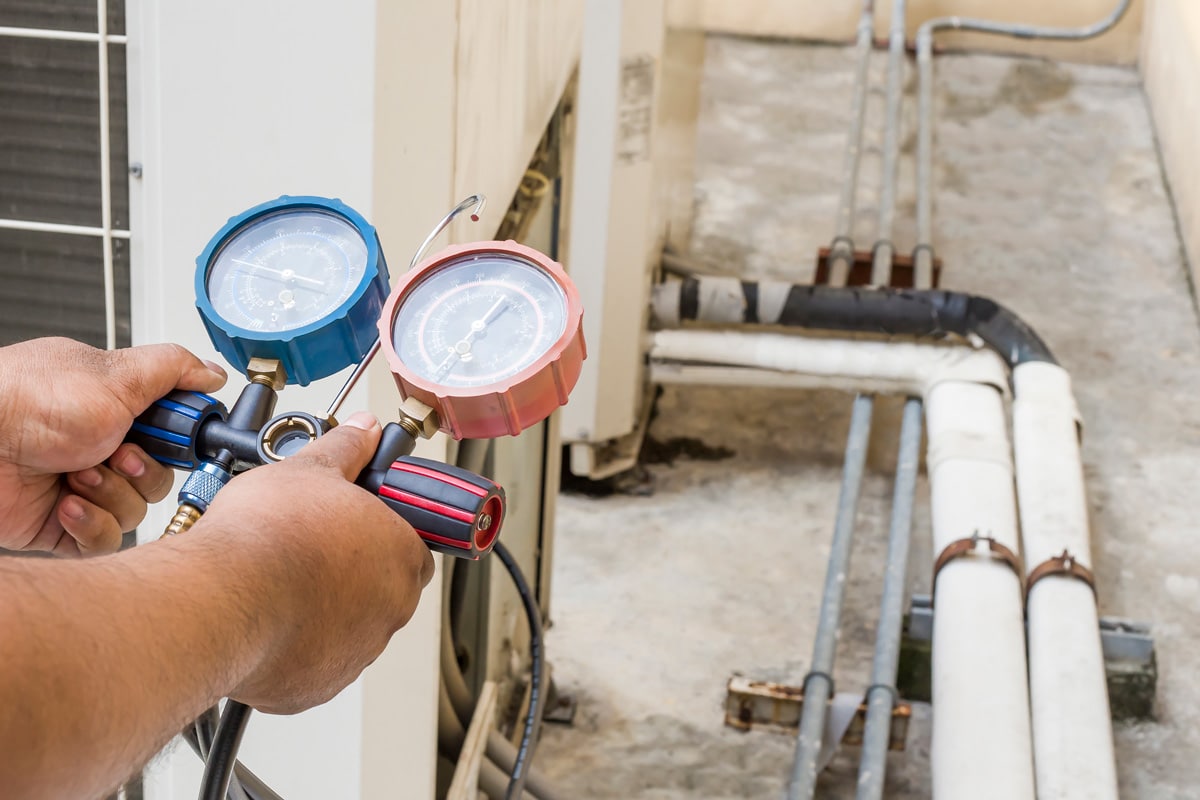
AC manufacturers expect the refrigerant to remain in the system for as long as the machine lasts. But cracks and leaks can cause refrigerant loss. Since the AC's efficiency depends on the quantity of refrigerant in its system, you may need to re-fill it to restore optimal performance.
Signs that Your HVAC System Has Low Refrigerant
These pointers will help you identify whether you need to recharge your AC.
Poor Cooling
When the quantity of refrigerant is insufficient, the system does not absorb as much heat as expected per cooling cycle. For this reason, warmer air may blow from the supply vents.
Rising Energy Bills
The AC overworks to cool your home when the refrigerant is low. Because the AC runs longer and cycles more often, you may incur higher operational costs. So, if you haven't changed your AC usage but the energy bills keep rising, you may need to check the refrigerant levels.
How to Detect Leakage
Check the following to assess whether your air conditioner's refrigerant is leaking.
Hissing Sound
A persistent hissing sound from your air conditioner can imply that the refrigerant is escaping the system in a gaseous state. But the refrigerant can also make bubbling noises if it seeps out when it is still a liquid.
Frost on Refrigerant Lines and Coils
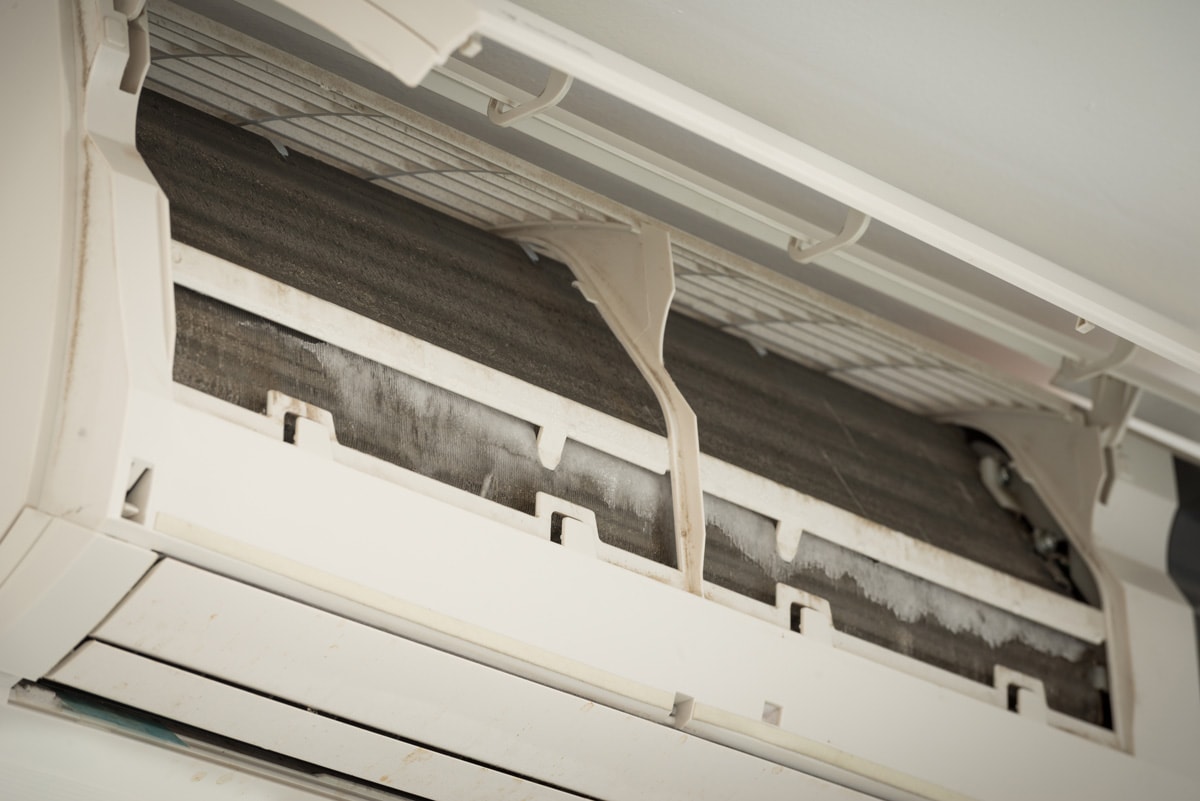
Low refrigerant levels can cause the coils and refrigerant lines to reach below-freezing temperatures. Consequently, moisture from the humid air can condense on them and freeze.
Read this article to learn more: Mini Split Liquid Line Freezing Or Frosting Over – What To Do?
Use UV Dye or Electronic Leak Detector
An HVAC expert can send a fluorescent ultraviolet dye through the system and then use a detection lamp to identify the exact spot where leakage occurs. Alternatively, the technician can use an electronic leak detector to identify cracks through which the refrigerant seeps out.
Identifying the cause of low refrigerant levels and addressing it before recharging the system is always advisable. Otherwise, your system will keep running low on refrigerant.
How to Identify the Refrigerant Your AC Uses
We've already discussed what happens if you mix refrigerants. But some unscrupulous technicians can mix the refrigerants, leaving you to bear the consequences. Therefore, it is vital to identify the refrigerant your AC uses so you can ensure that the same refrigerant is used during your AC's service.
Typically, your AC's outdoor condenser unit should have a label that indicates what refrigerant your system uses. Refer to this sticker to confirm that your system is being recharged with the correct refrigerant.
What are the Desirable Properties of a Refrigerant?
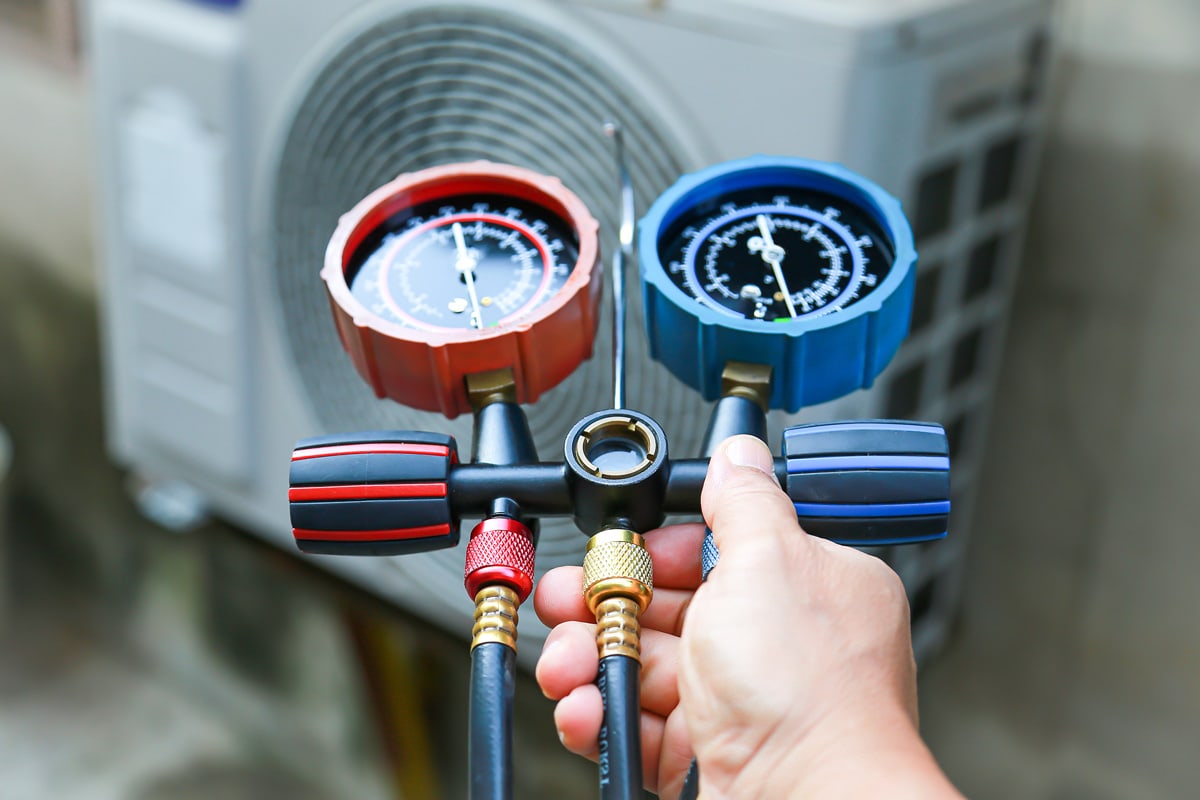
Because the refrigerant is the bloodline of your air conditioner, it is essential to confirm that the system is using a suitable refrigerant.
These are some desirable properties of a suitable refrigerant.
Stability
A suitable refrigerant should not decompose when acted on by the system's temperature and pressure. If a manufacturer uses a refrigerant that is not stable, it can swell, weaken, or dissolve the plastics used in the seals and motors within the system.
Also, an ideal refrigerant should not react with lubricants and other substances used in the system.
Odorless
The refrigerant should have no odor when it is in a low concentration, such as when contained in the closed loop. However, the refrigerant should also have a distinct smell when in high concentration to ease detection if leakages occur.
Non-toxic
A suitable refrigerant should not harm the environment by causing global warming or cause adverse health effects when it leaks into the atmosphere.
Non-flammable
The refrigerant should have a good blend of safety and functionality. Therefore, it is necessary to check the refrigerant's risk of flammability. You want to use a nonflammable refrigerant in the home, since few safety measures are in place.
You also want to ensure that the refrigerant does not make an explosive mixture in the air.
Availability
Ensure that the refrigerant your system uses is readily available. You want to avoid waiting weeks for the refrigerant to be shipped to service your equipment.
Availability also affects the refrigerant's cost. If the refrigerant is not readily available, it will increase your AC's operational costs.
Low Water Solubility
Choosing a refrigerant that does not form a solution when it mixes with water is best. The resulting acids or bases formed when refrigerants mix with water can corrode valves, metallic parts, and seals. The solutions can also damage winding insulation in compressors.
Wrapping Up
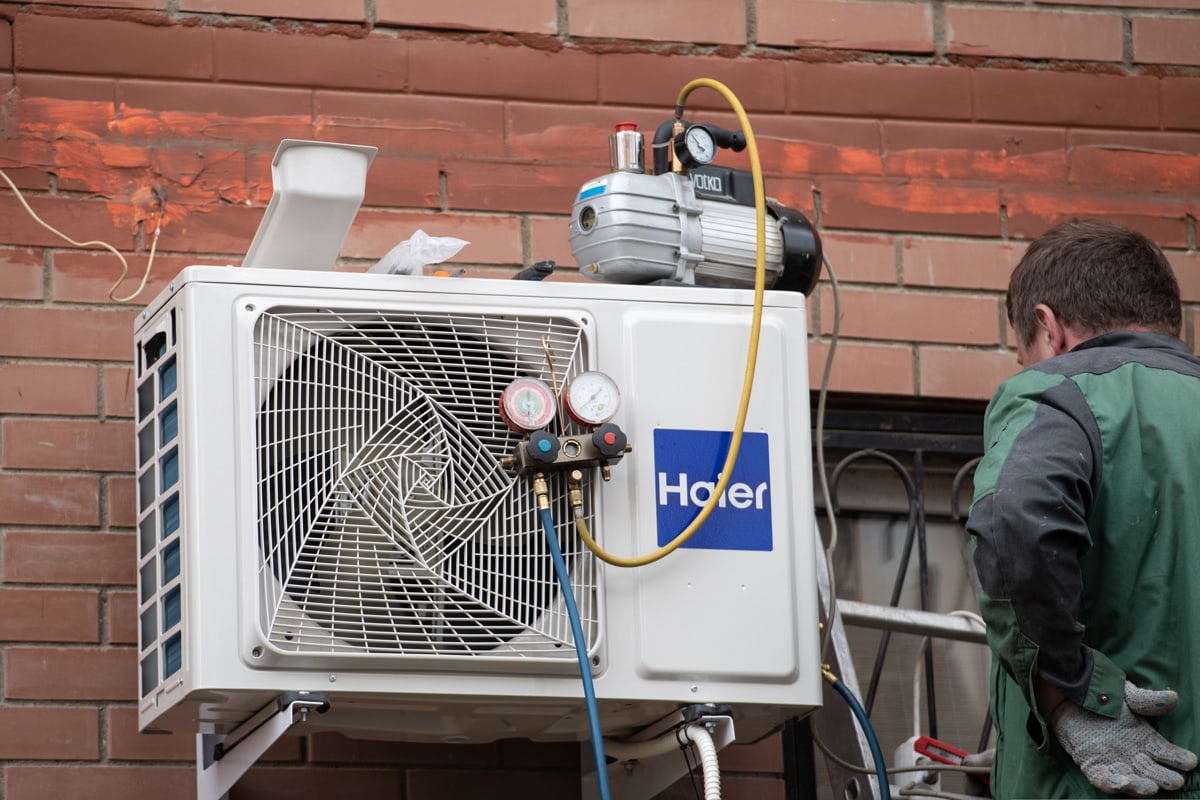
Mixing the R-22 refrigerant with another type of refrigerant will adversely affect your air conditioning system. It will also eliminate the possibility of recycling that refrigerant once your AC ends its useful life.
Ask an HVAC expert to recover the R-22 and replace it with a different alternative suitable for your system.
We hope this post will guide you in choosing an ideal replacement refrigerant. In addition, regular AC maintenance can ensure that your refrigerant lasts your AC's lifetime through early detection and resolution of leakages.
This post may pique your interest: What Type Of Freon For A Coleman RV Air Conditioner?

Is there a test to detect if a technician has used the wrong refrigerant when adding to your system so that you can prevent the future problems (predicted on your website) by having the unscrupulous technician return to drain and re-do the refill?